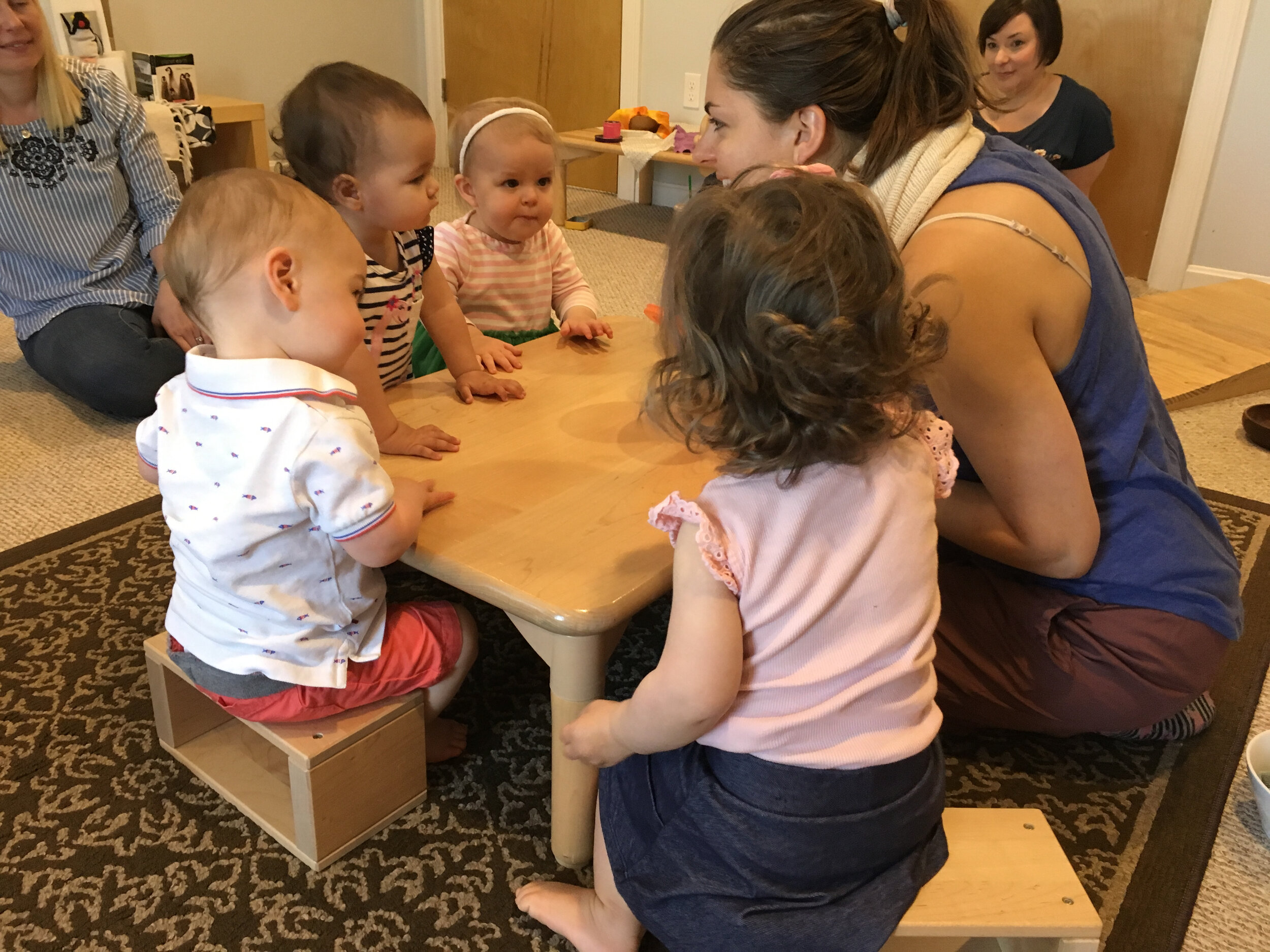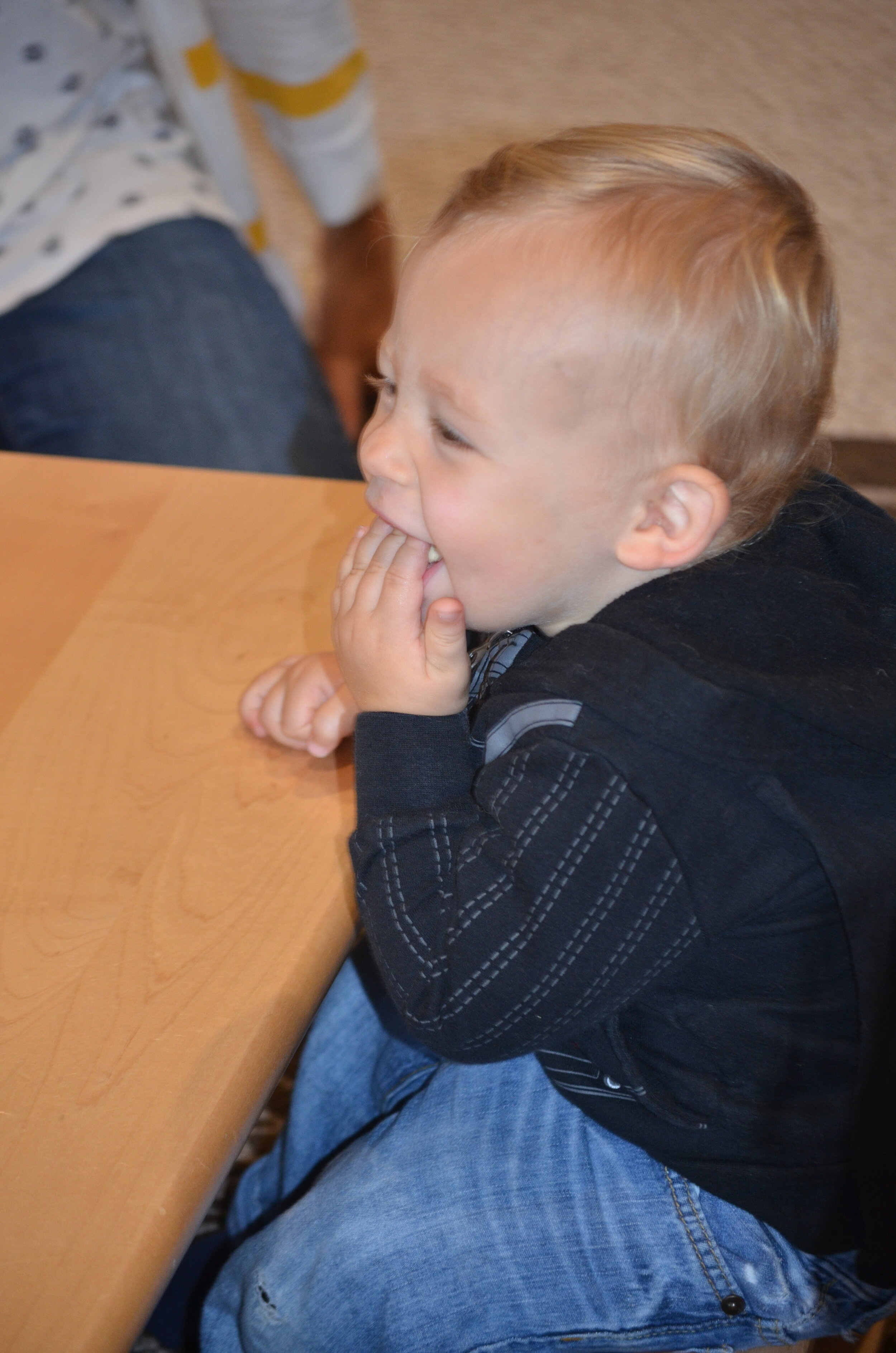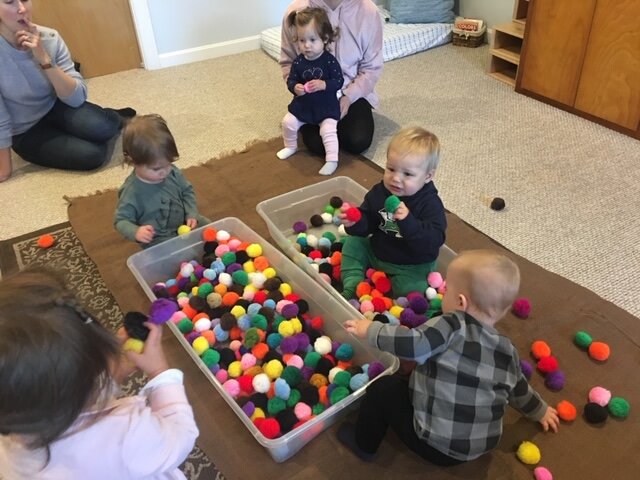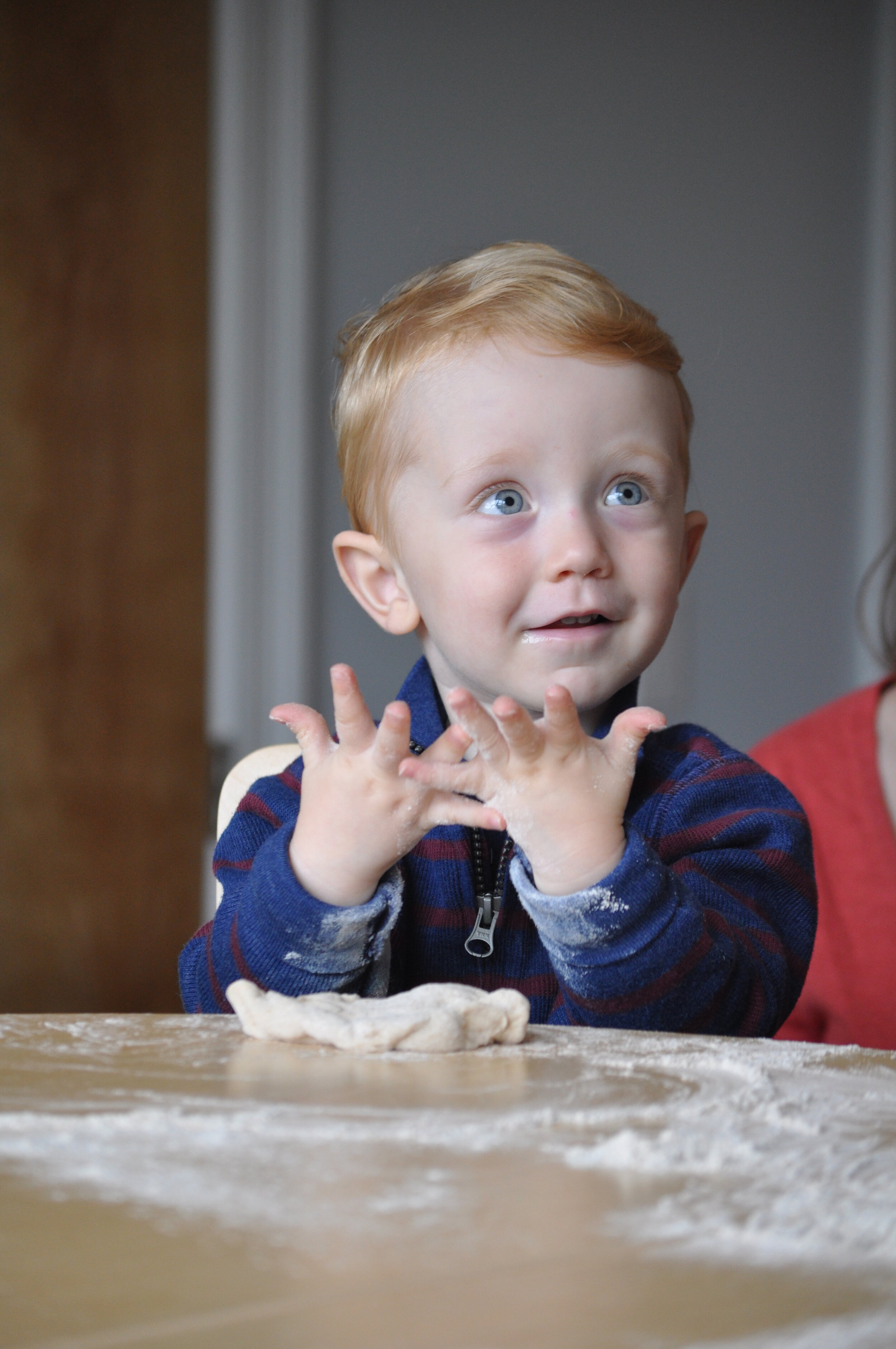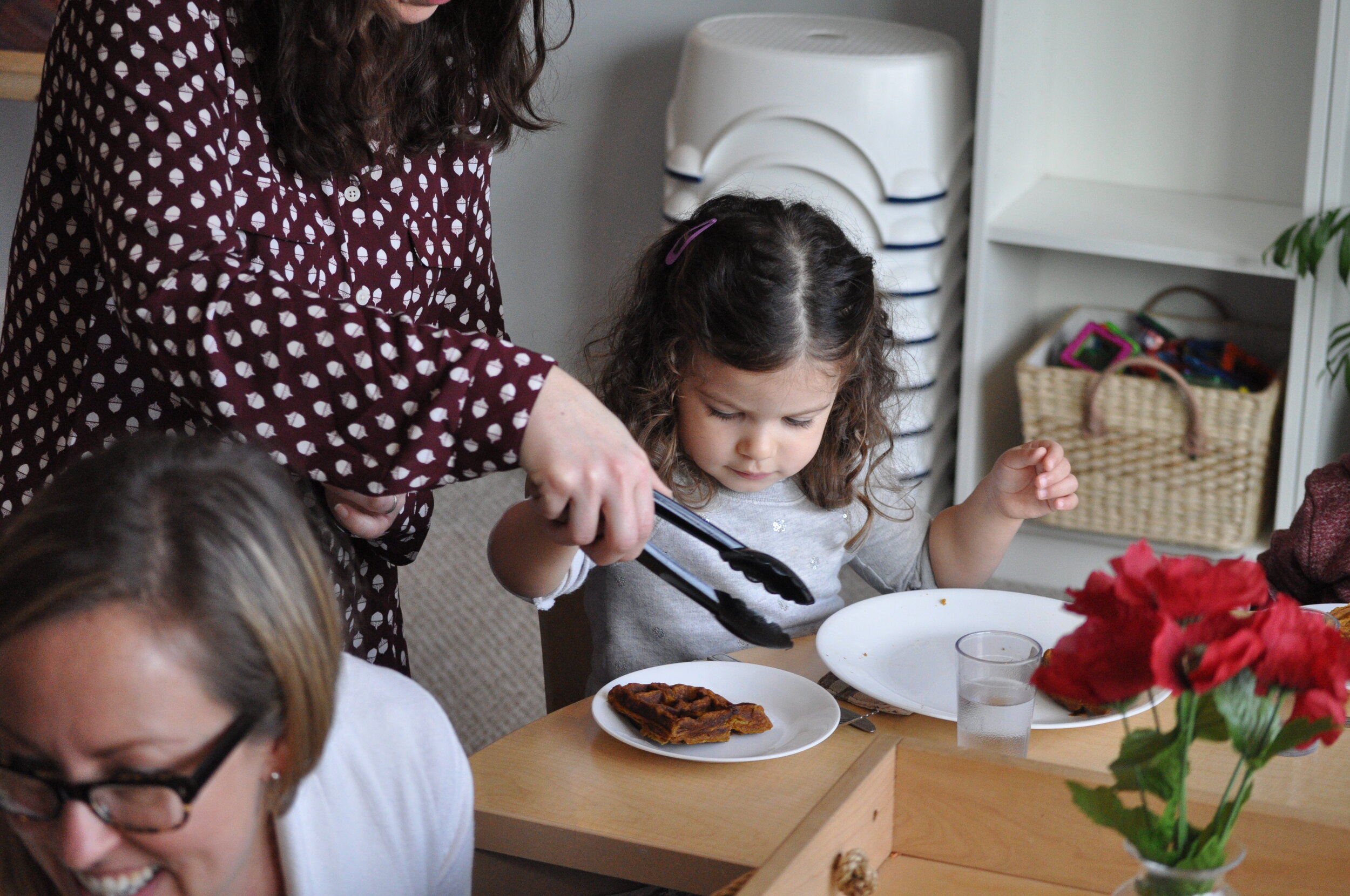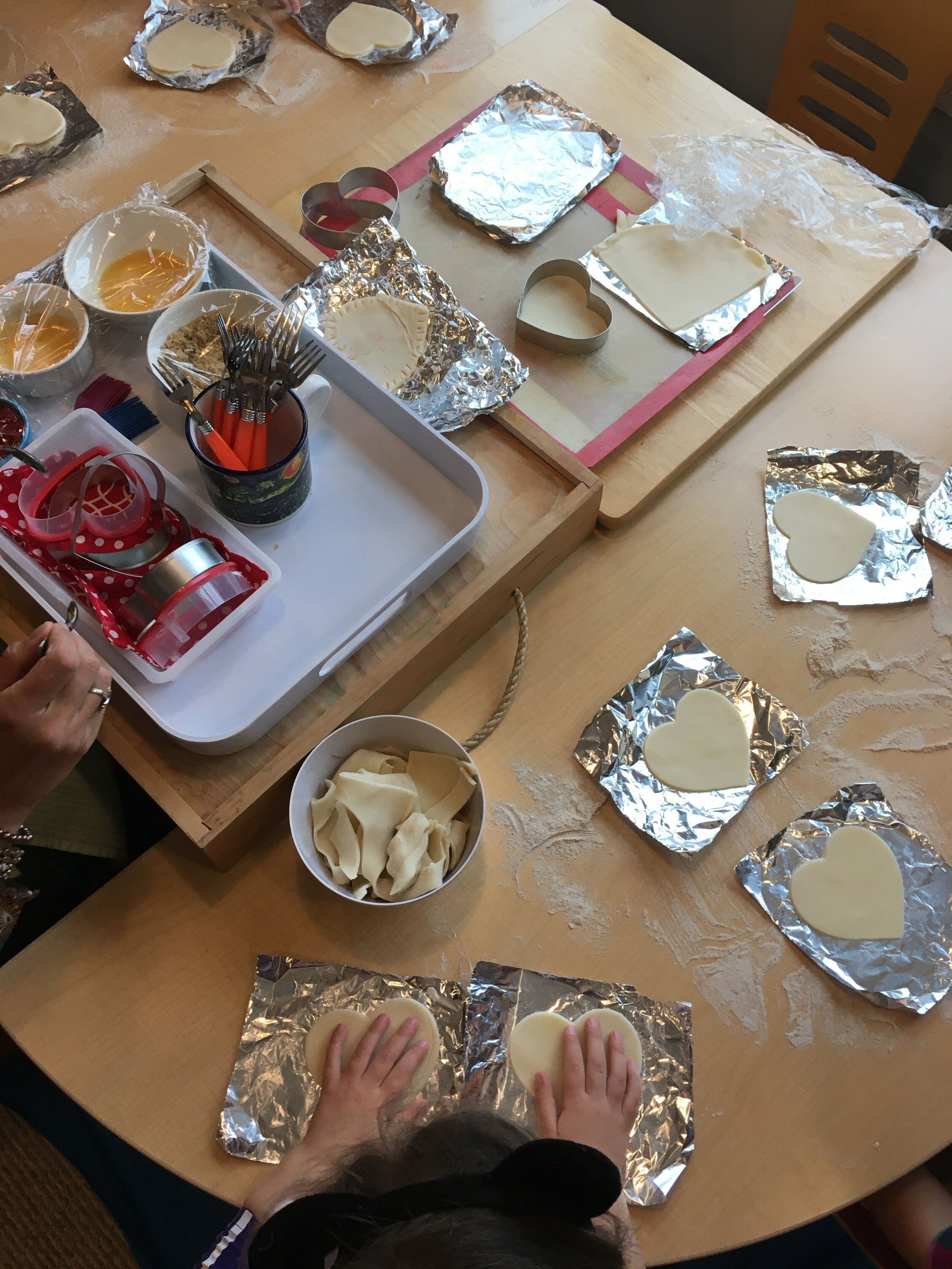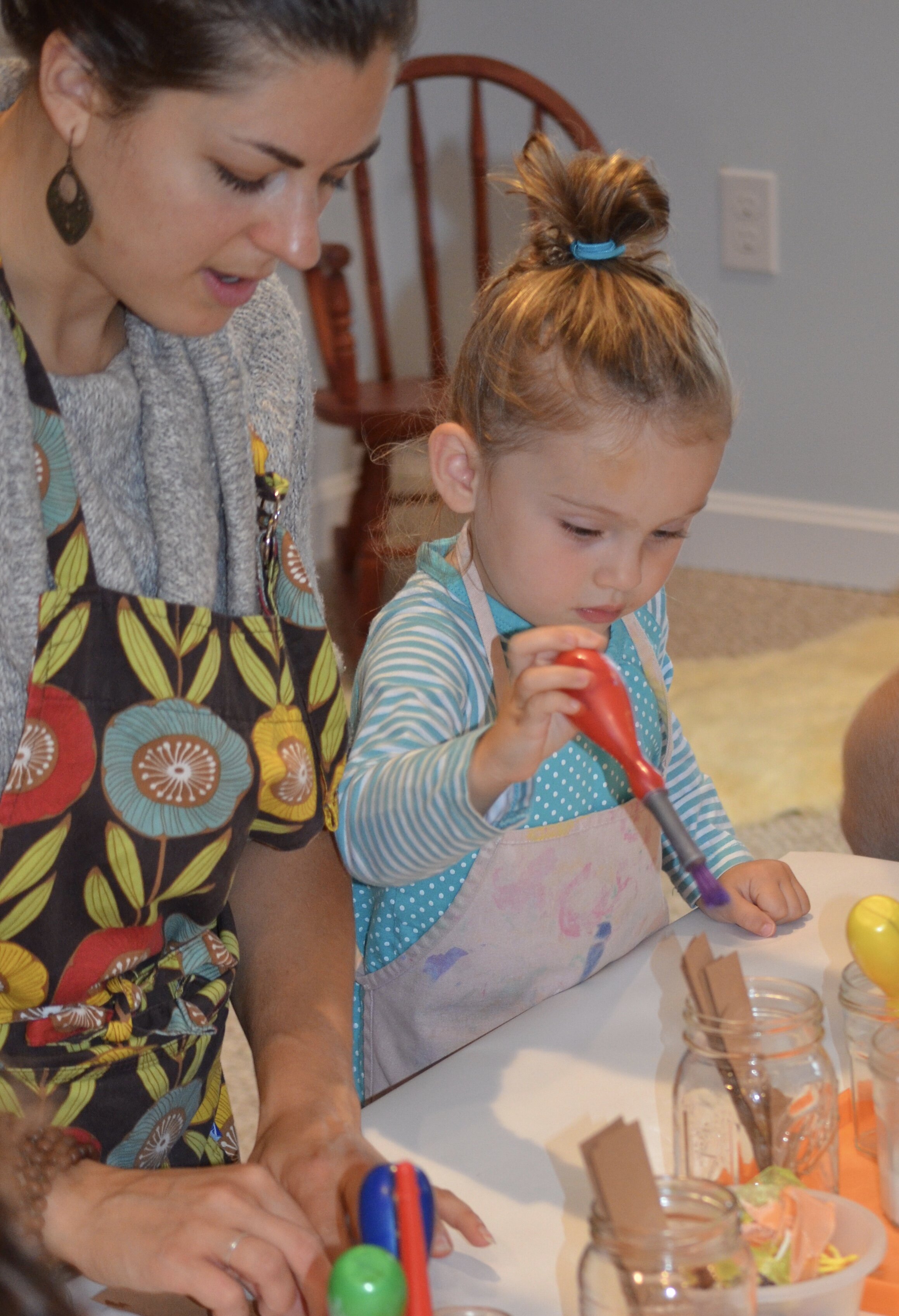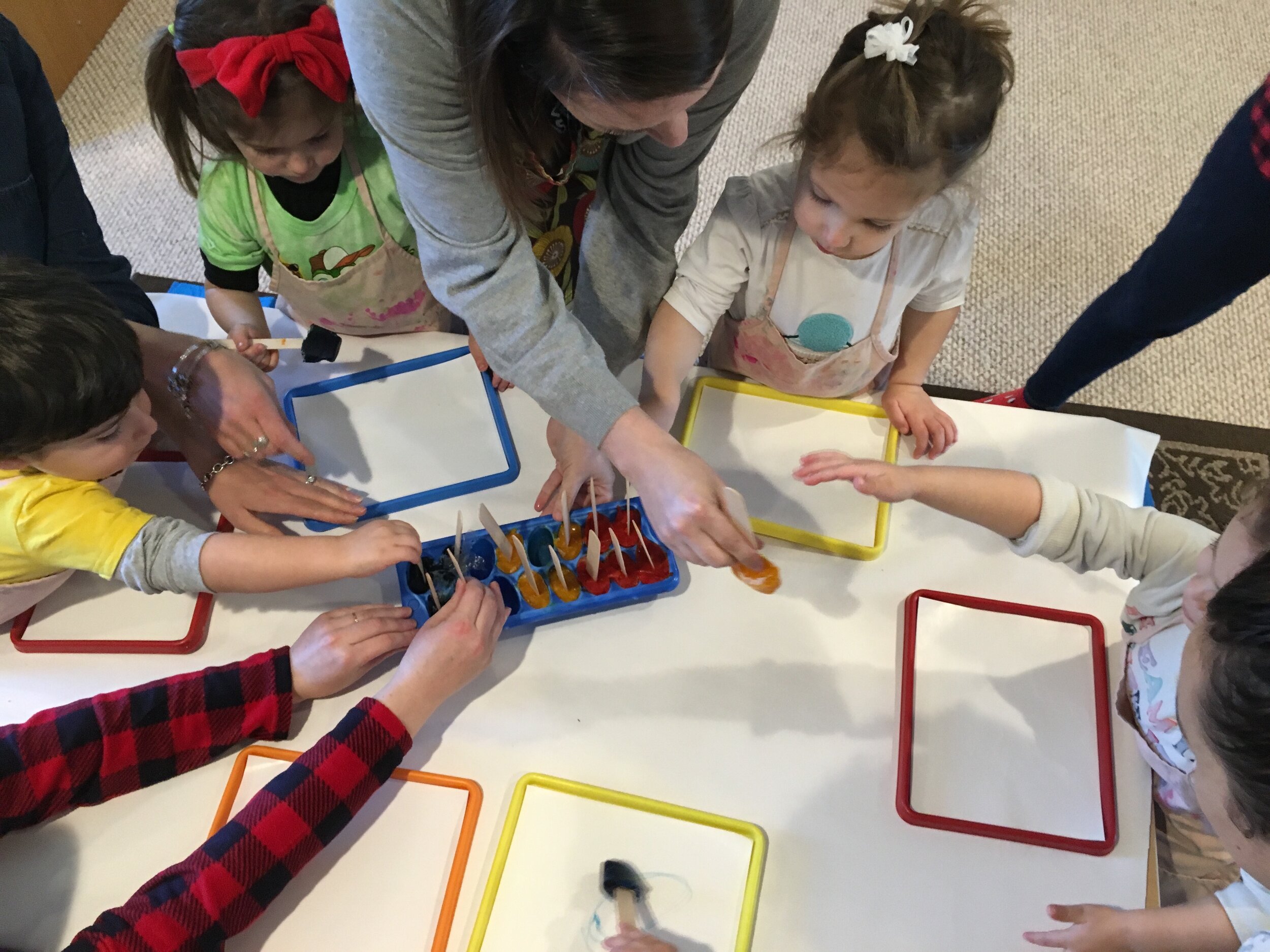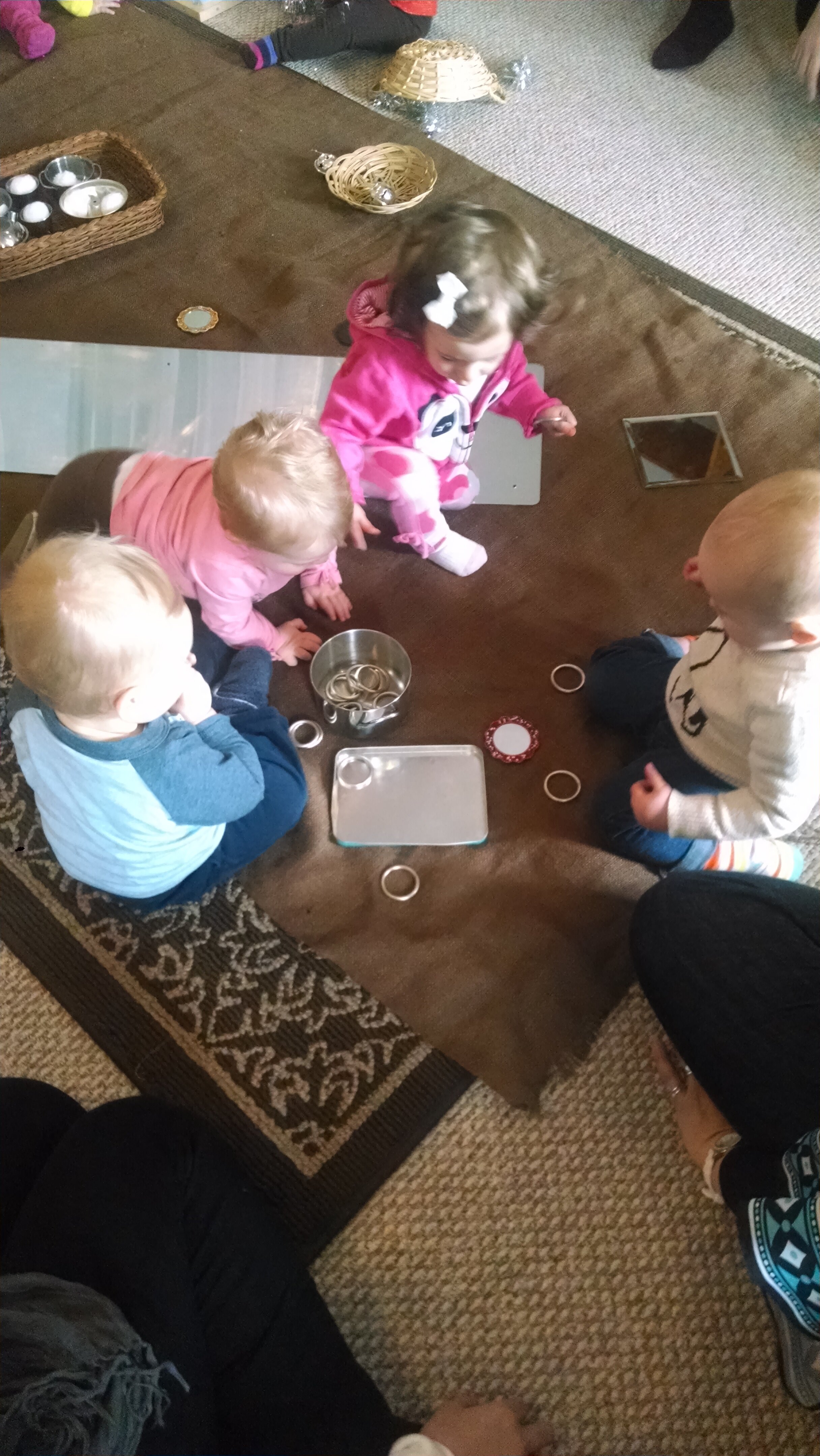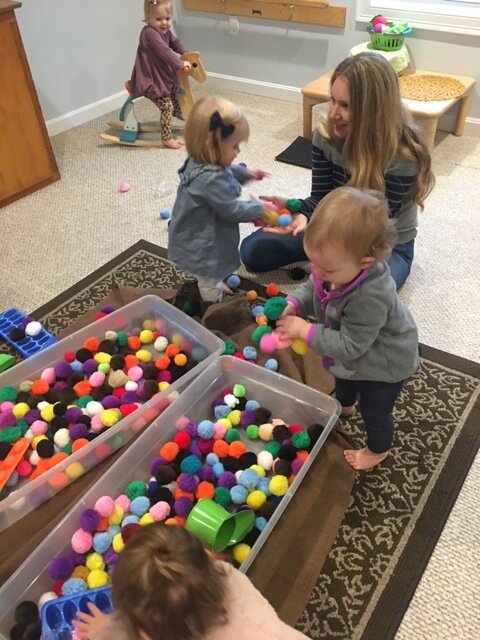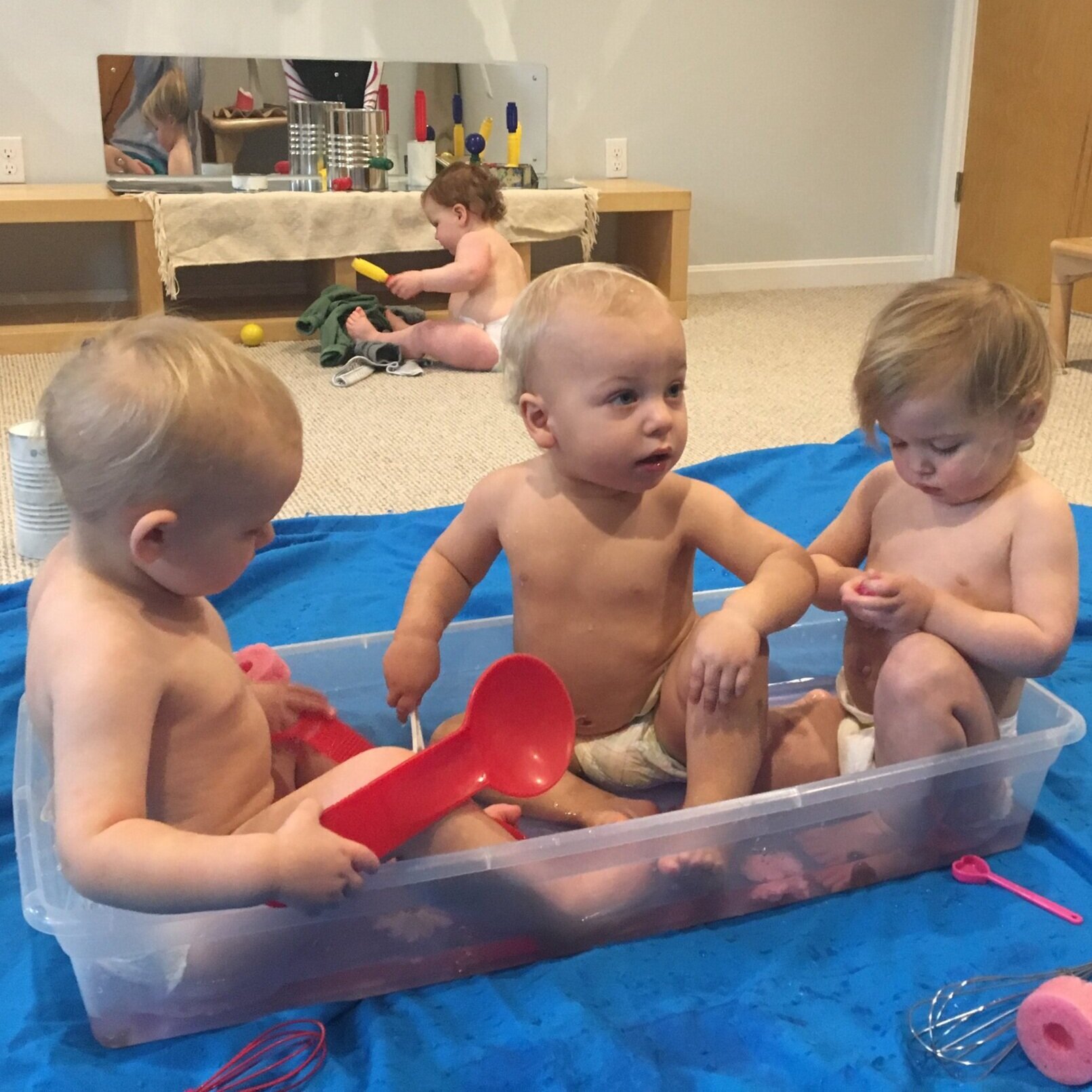How to Support Exponential Growth In Early Childhood
A Progressive Age Series With a Sprinkle of Harmony Magic!
Every morning, circa February 2020 and for years prior, Harmony’s play studios were crawling with babies—literally! Our family-favorite Parent/Child Class series offered an opportunity for families, babies, and toddlers up to 3.5 to connect, bond, and explore.
Experiencing these beautiful early moments of life was such a gift as we met so many wonderful young families and watched parents engage with and observe their toddlers’ discovery process and earliest forays into social connection. Day after day, these interactions reinforced everything we know about how to set the stage for babies and toddlers to learn through play with watchfulness yet minimal intervention from us.
When the pandemic forced the closure of our beloved classes—in favor of creating ample space to continue our Preschool and Kindergarten in smaller class sizes spread across Harmony’s expansive three levels—we realized we wanted and needed to continue to support the youngest members of our community in a new way.
Today and in future posts, we’ll share our experience and observations of these crawling, toddling early years with a sprinkle of Harmony magic—encouraging simple ways for you to nurture your child through the incredible, exponential growth of the first 24 months of life and beyond.
Loving Is Letting Go
As parents, we’re hard-wired to do anything we can to protect our children. During their most vulnerable newborn days, they truly need us to do anything and everything for them—yet as the first days blur into the first months and year, it’s so easy to overlook how quickly they become capable little humans! Our caregiving role quickly morphs into protecting them while stepping back just enough to allow them the space to grow and discover independently. …To nurture their natural developmental bursts of cognitive and motor abilities. …To meet toddlers’ processing pace with calm, patience, and observation—staying tuned in, and intervening only when support is needed.
12-to-18-Month LOVES
Rest & Routine. With 12 to 18 months of parenting under your belt, you’ve probably naturally figured out your days just flow more smoothly when you follow a basic routine. Good choice! Not only are you streamlining your own schedule and instilling the peace of some much-needed auto-pilot in your life (sleep deprivation, anyone?), you are simultaneously instilling the peace of predictability in your baby—and he or she is learning to expect and look forward to each of those routinely placed daily experiences.
Your days likely revolve around naps—well-rested children (and parents!) are so much better-primed to engage with focus and joy—and somewhere around 18 months, your baby will likely transition from needing two naps a day to just one (around midday). By simply, routinely layering in family mealtimes, space for independent play, stories, songs, snack breaks, and time to take in the wonder of the outdoors—you’ve quickly established the rhythm of a full day, rich with educational activities your child anticipates and relishes.
MOVING! Young toddlers are captivated by their developing gross motor skills—crawling, pulling up, taking their first, wobbly steps, and finally becoming confident walkers. Whether your home is big or small, you can easily find and create places for your baby to flex these new muscles! A spare crib mattress or couch cushions on the floor become enticing surfaces to crawl over. Closely shadow your child as he or she eagerly climbs up the steps, gently guide as he or she carefully feels the way back down feet-first, and (of course) repeat, repeat, repeat… When toddlers successfully summit your bed, couch, or armchair and appear ready to dive back down, be close, but patiently watch and wait to see how your child will problem-solve this new task. Offer the same feet-first suggestion or guidance only when needed. The repetition of all this feels monotonous for us, but our babies love it, are learning and mastering every single second—and before you know it, they’ve achieved a new skill, are on to the next…and ever-so-slowly, you’re earning back bits of space and time as your child incrementally gains independence.
Learning everything through touch, feel, experience—sensory play. It’s no secret that at Harmony we looooooooooove sensory play. That’s because babies, toddlers, and children through the early years love it—and learn exponentially from it. The great news is, materials for sensory play are all around us—and as the adults in our children’s lives, we are the curators of their sensory experiences.
Heuristic materials—grouped by a similar physical property (wood, liquid, reflection, etc.)—can help you think outside of the box when presenting new play options to your child. Your toddler may just crawl right into a low under-bed bin filled with heuristically grouped soft items—ribbons, oversized pom-poms, small pieces of fabric—or become mesmerized by a basket brimming with reflective materials—a shiny spoon, small stainless steels bowls, a mini handheld mirror. An inexpensive, full-length, plexiglass mirror laid on the floor with toys on top is instantly intriguing and a whole new way to experience play materials!
12-to-18-Month CHALLENGES
Respecting Others’ Space. Toddlers are so curious about everything—and that includes other babies, children, siblings, and family members. Adults are likely to accept the inquisitive hands or mouth of a teething toddler in stride—but other children may be less happy to do so. Often, a toddler crawls over another and neither is bothered by (or even aware of) the interaction. Still, it’s never too soon to gently help raise your toddler’s flag of awareness. Rather than physically intervening, simply, quietly stating, “You just crawled over Abby’s foot,” helps your child recognize what happened. If your child is more physical or goes through an aggressive stage—which is 100% normal at this age—quietly follow your child to gently communicate what was inappropriate and redirect as needed.
Sharing isn’t yet in the developmental wheelhouse of a 12- to 18-month child—and that’s perfectly fine. When young children play for extended periods with simple materials, they lay the groundwork for concentration and attention span skills. Therefore, though a sibling may express interest in what your child is playing with, we encourage you to protect your toddler’s focus, and calmly offer the sibling an alternative option, saying, “You may have a turn when James is done.” This is also a great stage to begin modeling basic manners like please and thank you to your toddler.
Boundaries. Somewhere in this 12- to 18-month window, you’ll begin to see your child’s very first indications of boundary-seeking. As he reaches for your phone or the TV remote, he’ll shoot a slight, sideways glance in your direction to gauge your reaction. BINGO! Instinctually, your baby is letting you know he knows there is a limit there. He’s silently asking for your consistent response. Give a firm, simple boundary and move the item. Resist the urge to react loudly or dramatically or engage in a lengthy explanation—too much attention is sure to create a fun new pattern for your little one. Calm, predictable, and clear boundaries, starting at this age, lay an important foundation for the months and years ahead—and will likely make your future life easier.
Across the early years, children’s gravitation to play is so deeply beneficial to learning—you can see how it helps even our babies begin to understand every facet of the functioning of the world around us. From the challenges of boundary-setting to the joys of developmental achievement, when coupled with our calm, patient observation and intervention as needed, your baby will be ideally prepared to soar through toddlerhood with flying colors!
We’d love to see any Harmony-inspired moments you capture along your child’s early years journey. Tag us (@HarmonyNLC) on Facebook and Instagram, and use the hashtags #HarmonyNaturalLearningCenter #TheHarmonyApproach #HarmonyNLC
______________________________
Interested in introducing more of The Harmony Approach to your preschooler at home? Check out Harmony at Home (FREE activities available).
Now accepting Transitional Preschool, Preschool and Multi-Track Kindergarten applications for the coming school year.


